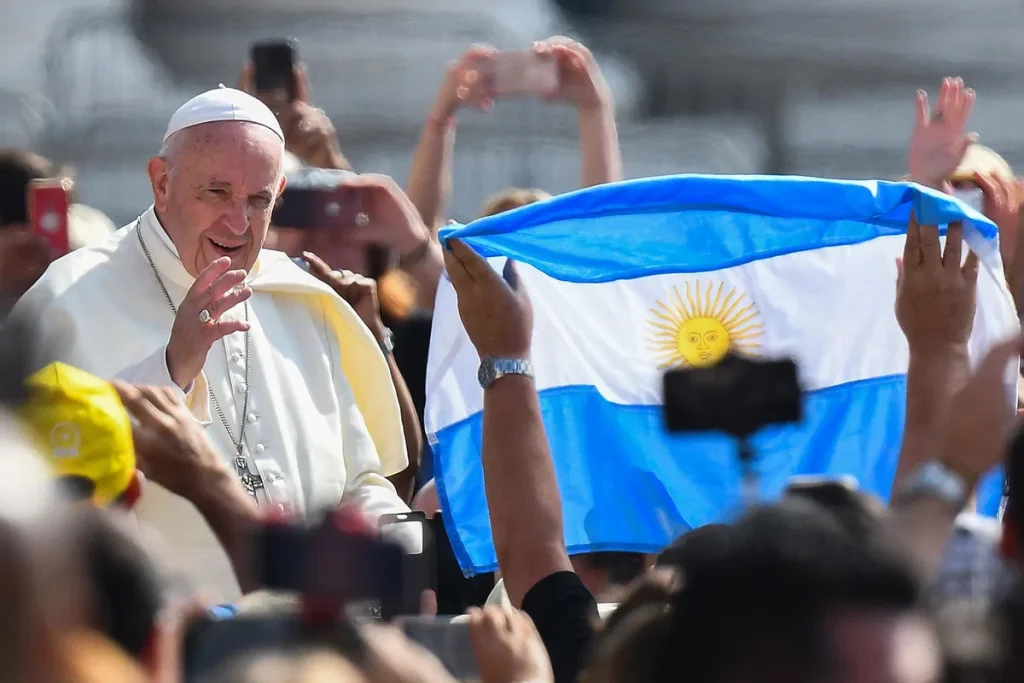Pope Francis did not return to Argentina after becoming the leader of the Catholic Church in 2013. Even though all Argentine presidents since then invited him, and the Church supported his return, he stayed away. His decision was based on political tensions, fears of division, and his difficult relationship with past and present leaders.
Political Tensions Influenced His Decision
Since 2013, four different presidents of Argentina offered open invitations to Pope Francis. The Argentine Episcopal Conference also encouraged him to come back. However, he chose not to visit his homeland. Reports suggest he was worried that his visit might increase political and economic divisions in the country. He wanted to avoid becoming a symbol that could split the people further.
His childhood neighbor, Ardina Aragon, shared that many Argentinians felt sadness over his absence. Francis himself believed he would return soon when he left for the Vatican in March 2013 after Pope Benedict XVI resigned. At that time, he told his parishioners, “see you soon,” expecting a short stay in Rome.
Past Conflicts with Argentina’s Leaders
Before becoming pope, Francis had many disagreements with Argentina’s political class. As Archbishop of Buenos Aires, he often criticized what he called the country’s “autocratic tendencies.” These comments caused tensions with then-President Néstor Kirchner and former President Cristina Fernández de Kirchner.
In 2010, Argentina legalized same-sex marriage, a move Francis opposed in line with Catholic teachings. His public opposition to the law further damaged his relationship with Fernández de Kirchner.
Strained Relations with President Javier Milei
Francis also faced tensions with Argentina’s current President, Javier Milei. Before he became president, Milei made harsh comments about the pope. He called him an “imbecile” and “the representative of the Evil One on Earth.” Milei also criticized Francis for promoting social justice, supporting taxes, and what he described as sympathy for “murderous communists.”
Despite these earlier insults, the two met in 2024 at the Vatican. They embraced during a ceremony for the canonization of María Antonia de Paz y Figueroa, the first female saint from Argentina. Reports described the meeting as cordial, but many observers noted that past tensions could not be easily forgotten.
Drop in Popularity Among Argentinians
When Francis was elected in 2013, he was hugely popular in Argentina. A Pew Research poll at the time showed that 91 percent of Argentinians had a favorable opinion of him. However, over the years, his popularity declined.
By September 2024, the same poll showed that only 64 percent of Argentinians viewed him favorably. Meanwhile, 30 percent of adults expressed unfavorable views about him, a sharp rise from just 3 percent in 2013. Analysts suggest that his long absence from his homeland and political neutrality may have contributed to this change.
Other countries in Latin America and even the United States also saw a drop in Francis’ popularity during his time as pope.
Buenos Aires Archbishop Jorge Ignacio García Cuerva commented that many parishioners in Argentina felt like “orphans of a father” who had to share their leader with the whole world.
Visits to Other South American Countries
Although Francis never returned to Argentina, he did visit other countries in South America. His first trip abroad as pope was to Brazil in July 2013. During his papacy, he also traveled to Bolivia, Chile, and Paraguay, all neighboring countries of Argentina.
These visits focused on promoting peace, dialogue, and care for the poor. His decision not to visit Argentina seemed to be part of a careful strategy to avoid political entanglements back home while still supporting Latin America as a region.


